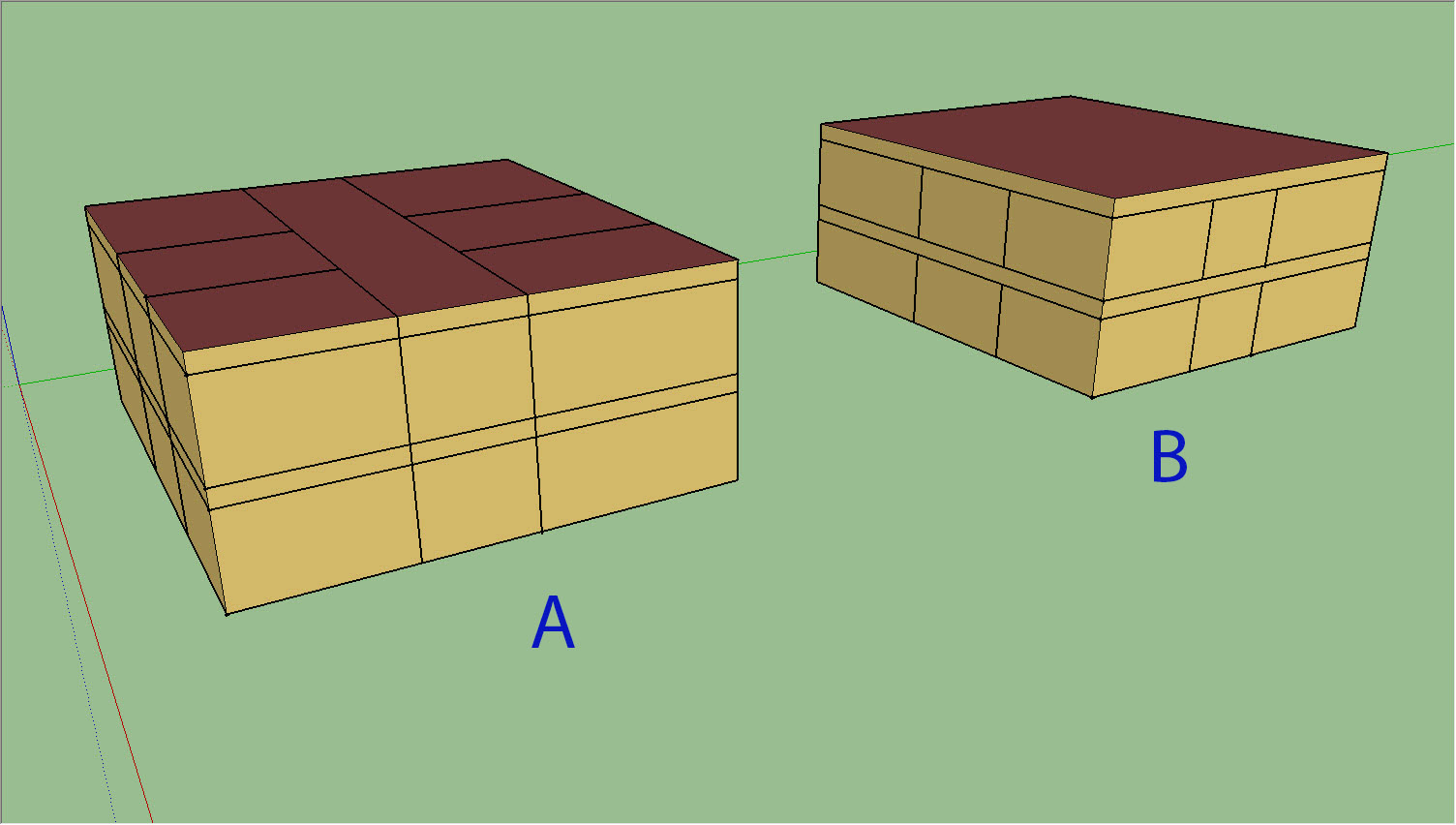Creating the geometry for plenum in Openstudio
I have watched This video that demonstrates how to create the geometry for and then hook up supply and return air plenums. And my question is that in practice plenums spaces are separated like construction A in the figure below and why in this video plenums are like construction B? I prefer the video approach but I hope it does not have significant effect on the result.





